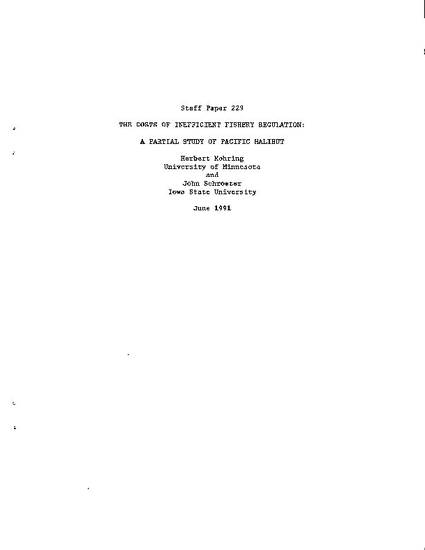
Article
The Costs of Inefficient Fishery Regulation: A Partial Study of Pacific Halibut
Economic Staff Paper Series
Document Type
Report
Publication Date
6-1-1991
Number
229
Disciplines
Abstract
It has long been recognized that unrestricted exploitation of fish populations inevitably leads to inefficiency.^ At best, the absence of controls brings about fishing effort levels that exceed those at which the marginal cost of a fish equals its value to consumers. At worst, this allocative inefficiency is compounded by a technical inefficiency: A given sustained yield is achieved with higher than necessary expenditures of effort. By suitably restricting fishing activity through an appropriate system of catch taxes, a regulatory body could ensure efficient exploitation of a fish population. The regulatory approaches actually used in practice, however, include technological controls (restrictions on the size, power, and other cliaracteristics of boats; port .turnaround time; or fishing gear) and.limitations on season length or total catch. Each of these regulatory measures is flawed in that it introduces inefficiencies of its own.
Published As
This report is published in Mohring, H. S. "The costs of inefficient fishery regulation: A partial study of the Pacific Coast halibut industry." Unpublished paper, University of Minnesota, Minneapolis (1973).
Citation Information
Herbert Mohring and John Schroeter. "The Costs of Inefficient Fishery Regulation: A Partial Study of Pacific Halibut" (1991) Available at: http://works.bepress.com/john-schroeter/8/
